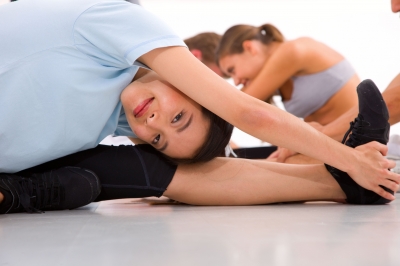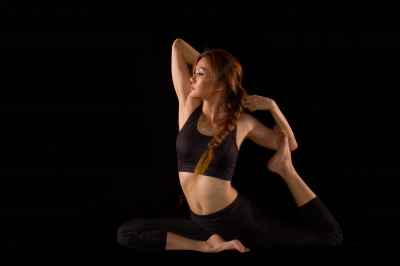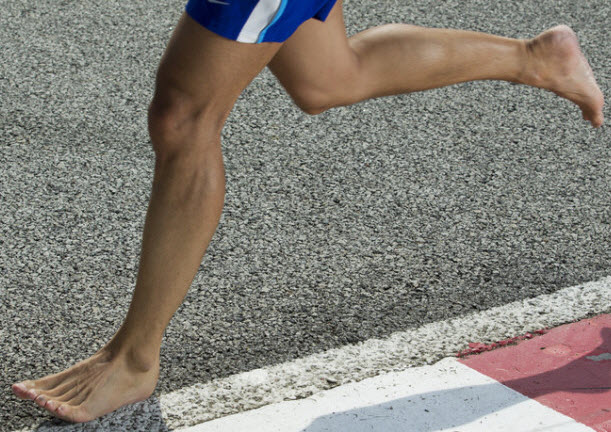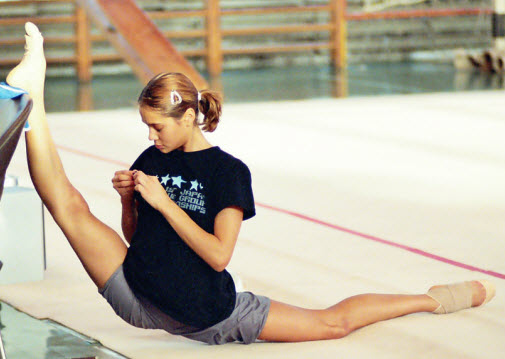Body Flexibility
Flexibility is the ability of your joints and body parts to use their full range of motion. Body flexibility is essential for performing all your daily activities such as bending, walking, and lifting. It allows your muscles to remain mobile and stress-free.

(Src)
But as age progresses, you start losing this flexibility and become more stiff. It is crucial to include stretching exercises in your daily workout regimen especially at middle age to maintain body flexibility.
How body flexibility works
There are about 600 muscles in the human body. The flexibility of your body depends upon the relaxation and stretch movement of these muscles and their connective tissue: ligaments, tendons, muscle fibers and joint capsules. When you stretch your muscles, you lengthen the tendons or muscle fibers that are attached to the bone. The longer the fibers are, the more you can stretch the muscle. Regular stretching exercises can improve the flexibility of muscle fibers while lack of flexibility results in shortening of the muscle fibers and connective tissues resulting in stiffness.

(Src)
The loss of tissue elasticity may cause muscles and joints to tighten up, and which can leave them more prone to tears, pains, and aches. If injuries aren’t treated, they can lead to a permanent change in posture and muscle function. Non-athletes or people who are not doing regular exercises are more prone to loss of flexibility. For them, stretching exercises should be mandatory as they can bring flexibility back to the muscles. One classic example of the loss of flexibility is leg split.
Types of Flexibility Work-Out
Flexibility can be achieved by two types of stretching exercise
- Static
- Dynamic
The static type of stretching involves slow moving of particular joints in a given direction to a point where you “feel” the stretch, and then holding the position for 15-60 seconds, and then return to a resting position. In dynamic stretches you begin by doing some slow movement of joints, then gradually increase the speed, e.g., “arm circles”.
Flexibility of muscles is imperative because if we don’t use our muscles fully, they will become inactive. These inactive or passive muscles don’t require energy, and not remaining active for lengths of time can cause stiffness of the muscles.
But the stiffness is not restricted to just your arms and legs; with age, stiffness can also affect heart muscles, which results in a higher risk of cardiovascular disease. Studies show that regular exercise can delay age-related arterial stiffness and heart disease, and that these conditions are directly associated with bodily stiffness.
What causes Stiffness?
Stiffness or rigidity of the muscles is a common condition observed among those who are middle aged. There are various reasons behind stiffness of muscles like aging, sleeping in uncomfortable positions, unhealthy food, lack of exercise, low thyroid function, and so forth.
(Src)
How to deal with Stiff muscles?
To deal with stiff muscles, try these tips
- Try to avoid a diet high in sugar, allergens, and caffeine
- Make sure your diet has enough minerals like magnesium and calcium
- Your diet should also have antioxidants as they helps to reduce the toxic effects and limits the damage caused by inflammation
- Vitamin D (sun bath) and essential fatty acids are natural anti-inflammatories
- Avoid taking NSAID (Non-Steroidal Anti-Inflammatory Drugs) Drugs like aspirin if possible
- Exercise regularly and include stretches, or hire an expert that can show you how to regain flexibility. Focus on stretches that involve larger muscle groups like hamstrings, shoulders, lower back, hip and calf muscles
Massaging is another alternative to warm-up muscles and increasing blood flow. It helps to remove waste products like lactic acid from the muscles. It is useful for relieving post-exercise soreness.






